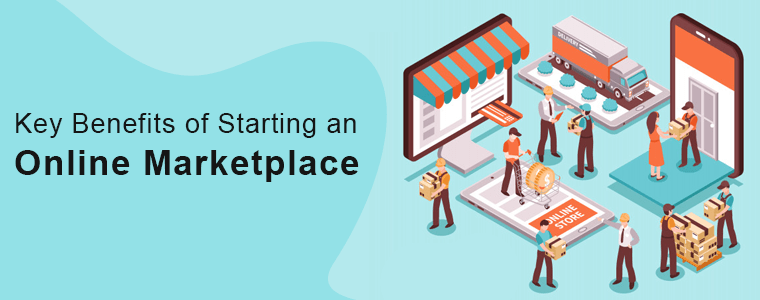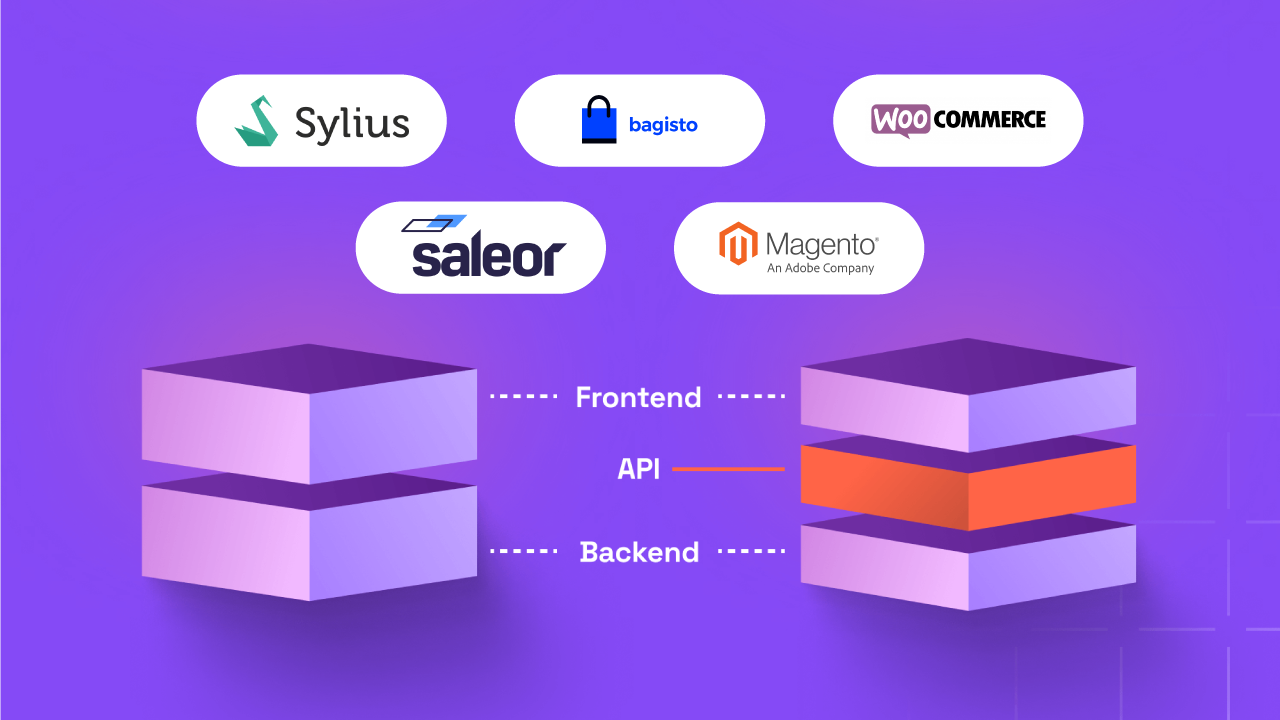Multi-Vendor eCommerce Marketplace: The Definitive Guide

With the COVID-19 pandemic, it seems that everyone is trying to open up an eCommerce store and for the right reasons.
For those who are in the industry, sales have shot up almost a trillion dollars from 4.2 trillion to 5 trillion in 2021. These statistics alone are enough to convince anyone to start up an eCommerce store.
Everyone wants a piece of the pie, but it’s not as easy as you’d expect.
There are alternatives to this. You can create a B2B or D2C or B2G store, a dropshipping store, or an eCommerce marketplace. The last one being the subject of this article.
In this post, we’ll get you up and running with multi-vendor eCommerce. This post is your ultimate guide to learning about and creating a multi-vendor eCommerce store.
What’s a Multi-Vendor Store?

Multi-vendor. The word sounds complicated, right?
Let me break it down for you. It’s an eCommerce store where you have buyers and sellers conducting their own business. If you’ve ever seen a bazaar, an eCommerce marketplace is just that: a digital bazaar.
Like a bazaar, the land (website) is not the buyers and sellers, but yours: they are just paying a price for selling on your platform.
Multi-Vendor: a Win-Win

Now, besides the premium costs and platform requirements, multi-vendor presents a win-win situation.
Your store, the marketplace, grows exponentially. This gives way to prominent branding and scaling opportunities. At the same time, the people selling on your store can gain more traction for their main brand and get more sales.
The only drawback to this is that you can’t have big names who already have an established brand name on their website. The workaround to this is a strategic alliance where they set themselves as a subsidiary of your store.
Famous Multi-Vendor eCommerce Stores:

Among others, these are some of the most popular marketplaces out there.
Why Should You Create Your Multi-Vendor eCommerce Marketplace?

Customers need options and control over their purchase experience. Ecommerce marketplaces help achieve just that.
The following are some of the most common benefits you can gain from eCommerce marketplaces:
- There is more variety in the type of product and services being sold. This results in more sales for your business.
- Marketplaces are home to a variety of buyers and sellers, each with its niche of expertise. This leads to better data gathering that helps you customize the experience of the marketplace.
- You can monetize your offerings significantly well by either using a paid plan for third-party sellers. You can even offer an exclusive membership for premium users.
- Compared to a regular eCommerce store, marketplaces are easier to scale since the costs of inventory are generally less.
Types of Multi-Vendor eCommerce Marketplaces

There are various types of eCommerce marketplaces operating on a variety of different business models. To get the most out of your multi vendor eCommerce store, you need to have an understanding of each multi vendor operation.
Independent Marketplace
One of the most common forms of marketplaces available online today. A place where buyers and sellers can come together to conduct eCommerce, that’s the gist of an independent marketplace. The “independent” in this stand for the individual or business who run the marketplace. They are “independent” of the buyers and sellers present on the platform, who only pay the owner for the opportunity to sell products on the marketplace.
Buyer-Oriented Marketplace
A buyer marketplace is a conglomerate run by several buyers without any third party. Buyers pool their resources together to create an eCommerce purchasing environment. The benefit of this type of marketplace is lower time to market and fewer administrative costs since businesses are pooling their resources together.
Supplier-Oriented Marketplace
A supplier-based marketplace, aka a supplier directory, is operated by a variety of different suppliers who want to get more exposure and sales through the internet. Similar to the old-timey phone directories, they can help businesses find the right suppliers in no time at all.
They are designed to give you a complete insight into what the supplier is offering and the specs of their products.
Vertical and Horizontal Marketplaces
Both horizontal and vertical marketplaces are essentially the same with only minor differences.
Vertical eCommerce marketplaces connect you to the entire breadth of a particular industry and all its related offerings ranging from automotive, telecommunications, construction, and textiles.
Horizontal marketplaces perform similarly, the only difference is that they provide you access to indirect equipment that you can use. The primary example of this being stationery, office equipment, or even sanitation equipment.
How to Launch Your Multi-Vendor eCommerce Marketplace

If you’re looking to create an eCommerce marketplace, you need to change your mindset. Lots of business owners come to the digital world looking for opportunities but few know how to properly avail them.
To get your approach straight you need to rethink the products, services, buyers, and sellers on your store and how they will bring traffic to your stores.
Seeing as how you won’t be sourcing inventory yourself; these considerations are important. In this post, we’ll be looking at the ways you can use to start your multi-vendor store.
First Steps to Starting a Multi-Vendor Site
Less is More. Determine Your Niche.
Be yourself. Don’t try to be so ambitious as to become the next Amazon or eBay. Those companies rose slowly into the giants they are today. For now, you should focus on a singular niche where you have the contacts who can get on board your business. Determine what kind of product you want to sell and what you need to do to get started with it. Only when you’ve managed your niche should you decide to move ahead to the next.
Benefit From Competitors’ Weaknesses
Understanding your competitors is an essential backbone of the business experience. You can’t go ahead with your business smarts alone. Analyzing the competitors, what kind of people they have in their store, what monetization model is working for them, and more. All these questions need to be answered when you’re looking to run your business efficiently.
Finding Businesses
When you’re looking to run an eCommerce marketplace, you’re going to want to find businesses that are willing to set up shop on your store. For that, you need to source companies all across the internet. Digital businesses, in general, are open to creating an account on a marketplace if said marketplace already has a lot of traffic going through it. It’s because of this reason that most businesses focus first on developing an eCommerce store and then move on towards the marketplace model.
Developing Your Website:
A marketplace eCommerce store, from what we’ve already discussed, is very different from an eCommerce store. It’s a B2B eCommerce store that has the potential to scale as your business grows. In technical terms as well, you need a website that’s built with the features of b2b, b2c, and features specific to marketplace eCommerce.
If you’re looking to create a multi-vendor marketplace, then just contact Codup. We’re eCommerce experts specializing in the field for over 8 years.
Multi-Vendor Marketing
To make the most of your multi-vendor eCommerce marketplace and more, you need to market it as much as possible. Fortunately for you, the internet provides ample opportunity to expand your business and grow. While some strategies require patience, others can offer a quicker return on investment for your business.
In the next few sections, we will be describing the marketing strategies you can use to make your marketplace more visible to online audiences. This section is by no means a complete guide to understanding the entire breadth of these marketing strategies. Ideally, you should perform further research on each of these to make the best out of these strategies.
Email Marketing
Right after you’ve launched your marketplace, start collecting email addresses from your users. Everyone opens up their email daily so this collection process can provide you with serious benefits when you’re looking to market your store to prospective customers. If an email address user has already purchased from your store, this can prove a useful retargeting tool since the user is more than likely to purchase from your store.
Through collecting emails, you can send them newsletters, promotions, articles, success stories, product discounts, and more to drive traffic to your website. The email copy, whatever the content may be, must be catchy to the user. The more interesting you make your headlines, the more the chances that you will click and convert.
Most modern email marketing tools come with the ability to segment buyers based on different segments. Age, gender, and other demographics are essential tools in ensuring that you just don’t get raw data, but also analysis and understanding of the data.
Search Engine Optimization
If you’re running a business online, then SEO is a must-have. You will have to perform search engine optimization on your website.
The end goal is to rise to the search terms to the most coveted first page of google (if not the #1 search result). There are plenty of SEO tools on almost every major eCommerce platform that you can use to take your business to the next level.
Regardless of whether you have an in-house or outsourced team, you should ensure that all your product pages have both internal, external, and high-quality backlinks to your website. Your site content should be as optimized as much as possible to ensure that no problems occur in your SEO efforts down the road.
Paid Ads
A recent innovation in the digital marketing sphere is that of paid ads. Google Adwords is one of the main tools for paid marketing which allows you to go above the regular search bar and show your position as first for a particular keyword.
While paid marketing can be used by almost anyone, what it’s good for is businesses in industries that are already saturated and highly competitive to begin with. You can use paid marketing to advertise your services at the very top of the search results above the competition.
Now, the process gives a high ROI very quickly if you’ve created the right advertisement. In the beginning, it fits and starts but sooner or later you will start to see a return on your business.
“Word of Mouth” and Viral Marketing
Even with all the marketing strategies applied, you cannot disregard the fact that word of mouth marketing is indeed one of the best ways to advertise your business.
Before, you had to advertise your business to real-life customers. You can do that now still, but you can also use your internet presence to start creating conversations about your brand. For that, you need to provide your users with an incentive – an incentive that not only helps them out (promotions, discounts, free trials) but also enables them to share your brand voice with the consumer.
In addition to that, you can apply a carefully crafted social media marketing strategy. This not only allows you to advertise your marketplace offerings but also makes people notice. Consumers and business buyers alike like a brand that stands out from the crowd, provided they don’t border on the offensive.
Motivating Vendors
Now, you can incentivize the consumers to share content and recommend products to the audience, but that will only take you so far. To get the actual boost in traffic to your multi-vendor eCommerce marketplace, you need to reach out to influencers within your niche to promote your marketplace. Because of their reach, your business can become even more influential to the audience. When you’ve managed to increase your reach, all you have to do is give your customers the incentive to purchase the product.
Building Community
You can’t gain customer loyalty without offering support in one form or another. Marketplaces offer you the opportunity to tailor a community next to your offering. Think of the community support provided by Amazon and how they have built a customer services community that focuses on all sorts of discussions. This not only keeps the conversations flowing but also improves the user experience. Moreover, it reduces the need to hire customer service agents for your store.
Besides creating a community, you can also add blog articles, forums, social accounts, and video content that caters to your business.
Measure, Analyze, and Improve
When you have everything set up, it’s time you start to analyze the performance of your multi-vendor eCommerce marketplace. This is the most essential step and gives you an idea of where you stand with growth. Is it simply a regular website or are you just wasting your investment over it?
Even though we’ve written a lot, these tips just scratch the surface of how you can create a multi-vendor website for your marketplace. We hope you consider each one of these considerations to create the most operational website out there.




